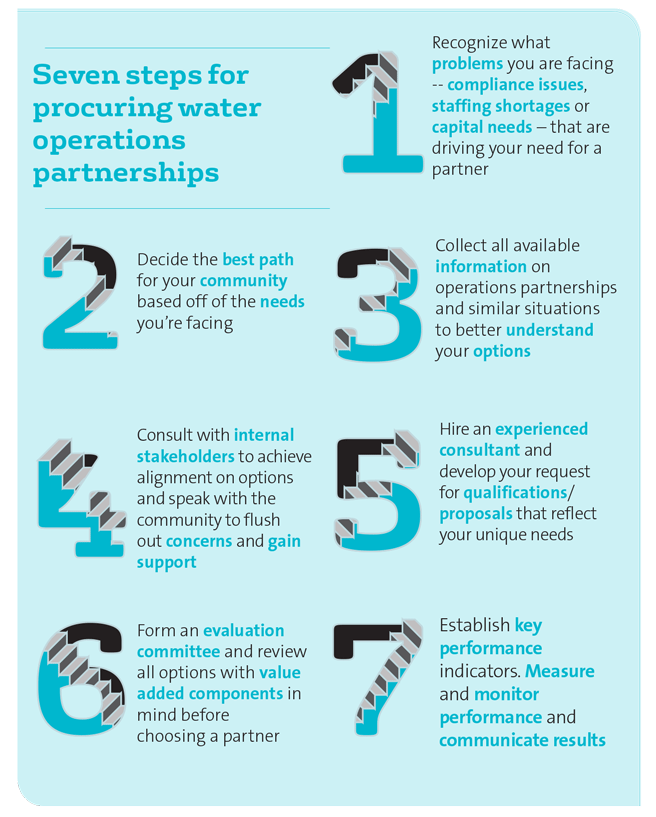Cities and municipalities are faced with growing challenges when it comes to water and wastewater utility infrastructure needs, capital financing, improving technology and preparing for extreme weather events.
Many cities have addressed these needs through public private partnerships, where operations and maintenance activities are contracted out to third parties that specialize in utility infrastructure. These operations partnerships offer a city or municipality resources, capital, labor and technology that may otherwise be unavailable.
Cities and municipalities can choose to outsource whole utility systems to the private sector or components like customer service or metering operations. A common misperception when it comes to public private partnerships is that the private company needs to own the assets. In reality, the public sector often continues to own all of the infrastructure, while the private company operates and maintains them.
Getting Started
Procuring a water operations partner can be a daunting task though, and it is not always clear where to start when looking for the best partner for a city or municipality’s unique needs. The first thing to do is explore the differences between different kinds of public private partnerships, and what your drivers are. Is the utility struggling to comply with regulations? Is the city’s utility infrastructure aging and therefore negatively impacting your operations? Staffing, labor and customer service are also common needs from a private partner.
Other key considerations during the process include transparency and communication with internal and external stakeholders. There is a lot of misinformation out there about what working with a private partner entails and effects in areas such as personnel and rates.
Best Practices
A private partner cares about the city in which they live and work. Private companies will hire the legacy personnel at the utilities as their own employees. In Milwaukee, all 140 members of the sewerage district’s staff was hired when they joined a public private partnership 10 years ago.
Best practice is to prepare all the facts and communicate them early on in the process with constituents. Recognizing operational pain points, and prioritizing those concerns, can become a hot topic debate within the city and community, it’s crucial to understand the best practices of procuring a partner to avoid backlash from the community, ensure you’re getting the best deal and partner, and you’re addressing the concerns that matter most to your community.
The first steps to procuring a water or wastewater operations partner is often the hardest hurdle. Want to learn more? Download the seven steps for procuring water operations partnerships guide!



